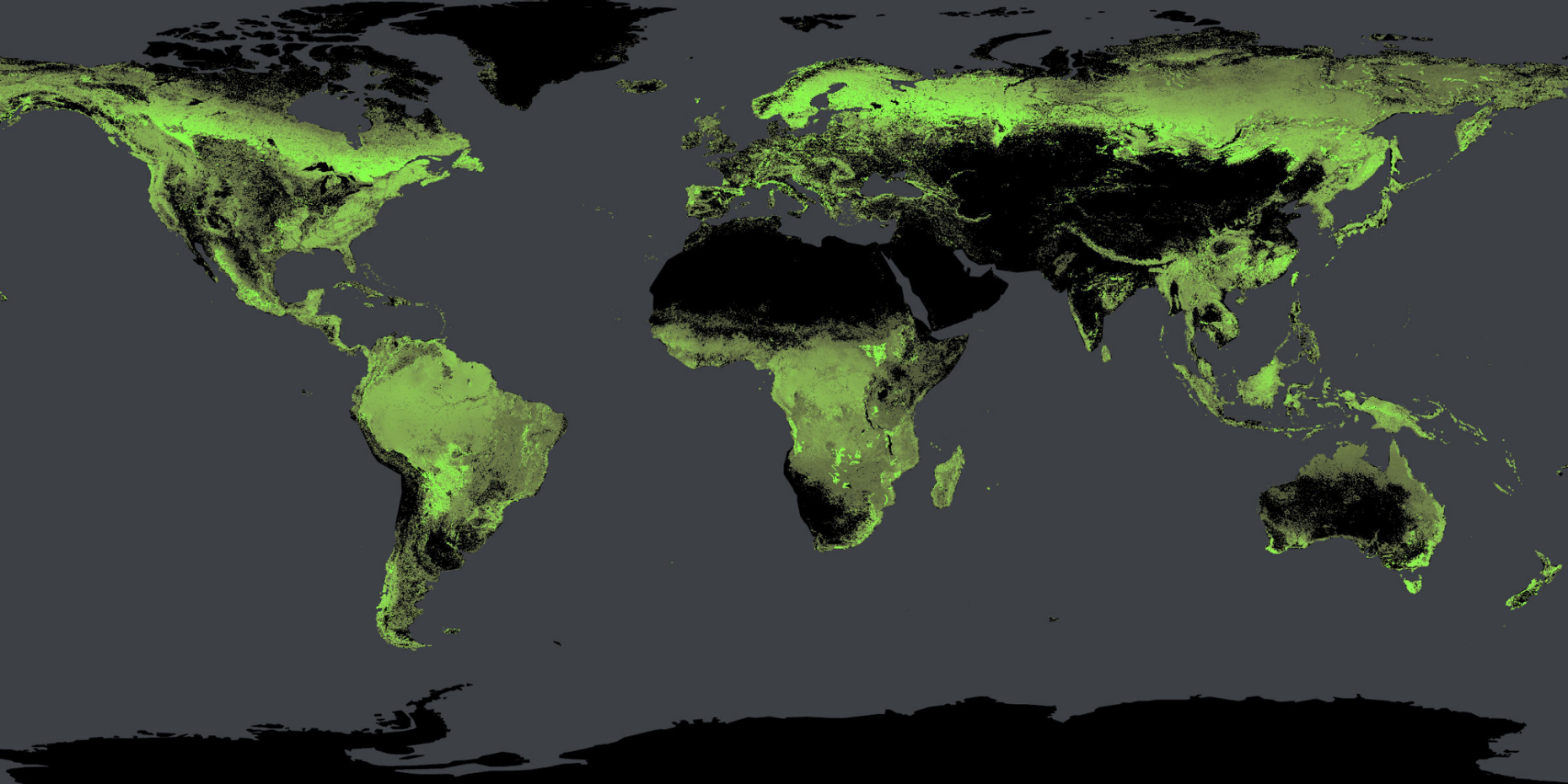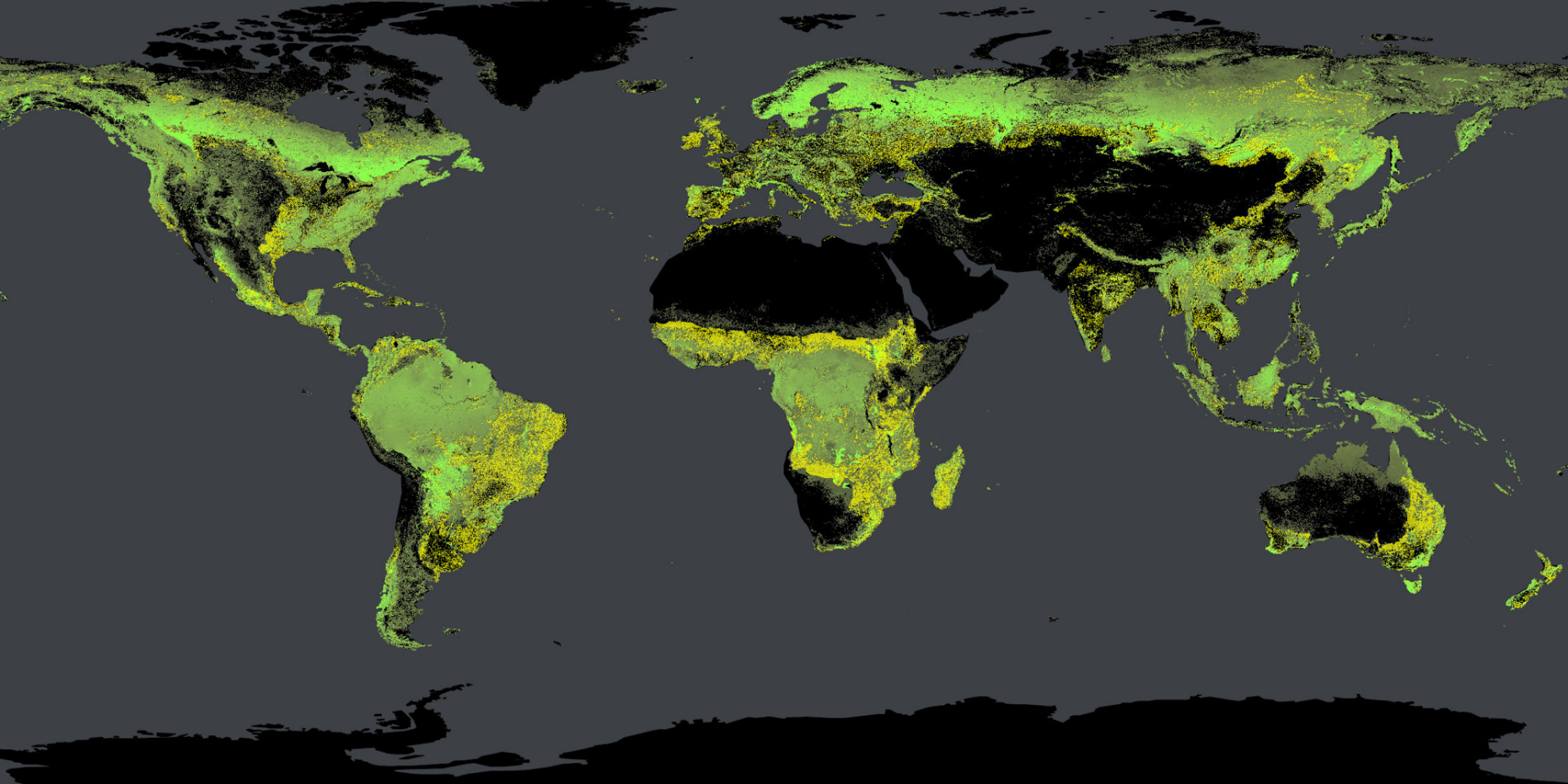Why the answer to climate change lies in data
We still know very little about how global ecosystems influence our climate. Tom Crowther thinks that the answer to climate change could lie in global ecological datasets.

Do you know how many trees there are on our planet? Besides being a headline figure, this number proved to be transformational in the fight against climate change. How?
Climate change and biodiversity loss are among the two greatest threats facing society. While there is plenty of informed dialogue about the need to enhance natural carbon capture and decrease the rate of human carbon emissions, we are yet to see any meaningful change on either front. Why?
The answer is quite simple: The sheer scale of our planet means that we still have a very limited understanding of global ecosystems and their potential for cooling the planet. For example, we currently have no idea, whether forest restoration – an activity repeatedly advocated by environmental organisations – could capture 10 or 110 gigatons of carbon from the atmosphere (see also this blog post).

Climate change and biodiversity
Over recent decades, satellites have transformed our capacity to classify terrestrial ecosystems across the globe. And this has increasingly become a key part of the conservation scientist’s toolbox, with multispectral images and remote sensing radar able to provide data down to a resolution of 3,7 meters – sharp enough to distinguish individual trees! But they cannot tell us what’s going on below the canopy surface, something which would be crucial to know.
At the Crowther Lab, we aim to learn how natural ecosystems, such as soil and tree biodiversity, absorb and store or emit carbon so that we are able to better predict and fight climate change. We work interdisciplinary and across specialisms, approaching the most important questions from different angles in order to gain a holistic view. With the understanding that climate change and biodiversity are intrinsically linked, we seek to better understand the global forest system – above and below the ground.
Therefore, our lab is enhancing climate predictions with real, ground-sourced data containing over 30 million measurements of individual trees as well as 120,000 measurements of soil communities around the world collected through our global network comprised of thousands of ecologists. This empirical, bottom-up approach is improving our understanding of global biodiversity and carbon storage.
Satellite imagery and ground-sourced data
With the latest developments in machine learning and Artificial Intelligence, we are now at the dawn of a big data revolution that can transform our understanding of the living world. By pairing top-down satellite imagery with our ground-sourced datasets of forest trees and biodiversity – the largest in the world – we are able create interactive maps on our Global Ecological Monitoring platform (GEM). These maps provide critical layers of ecological data (both above- and below-ground) for any polygon of latitude and longitude coordinates on Earth, providing insights that we never thought we’d have.

With this, we can now estimate; 700bn – 1.3 trillion trees could exist in naturally forested regions around the world, how much carbon could be stored in these extra trees, and how much cooling impact they could have on our climate.
«It’s only with a global perspective of all ecological ecosystems that we can define effective targets and strategies for nature-based climate change solutions.»Tom Crowther
Additionally, we are now starting to understand an even bigger carbon pool in the soil. As the global temperatures rise and the soil warms, a predicted 55 gigatons of carbon stored in the Earth’s soil could be emitted into the atmosphere – roughly the equivalent carbon emission of the U.S. per year. With no soil restoration activities, like planting cover crops, this will accelerate the rate of climate change by up to 17%.
Nature-based solutions
I am convinced: It’s only with a global perspective of all ecological ecosystems – their processes, dependencies, and impact on the climate – that we can define effective targets and strategies for nature-based climate change solutions. Our interactive maps are an important tool to achieve this. The spatially-explicit information they provide, tell us which regions of the world we should focus on if we are going to address one of the greatest threats to modern society.
Coming back to our headline figure from the beginning, we now know that there are roughly 3.04 trillion trees on the planet, over seven times more than previously estimated1. Three years on from this initial discovery, the UNs Billion Tree campaign has been transformed into the Trillion tree campaign2, and they have now planted over 17 billion trees in high carbon capture parts of the world. Surely an eye-opening example of how research can significantly impact the success of climate change mitigation activities.
References
1 Crowther et al. external pageMapping tree density at a global scalecall_made. 2015 Nature
